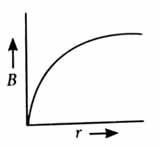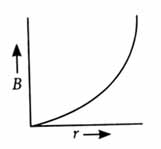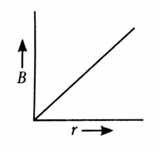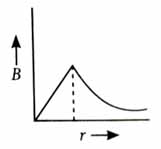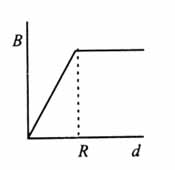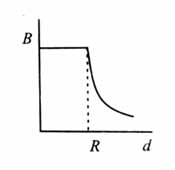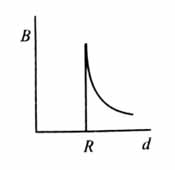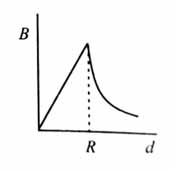Topic Question Set
Q 1
:
From Ampere’s circuital law for a long straight wire of circular cross-section carrying a steady current, the variation of magnetic field in the inside and outside region of the wire is [2022]
uniform and remains constant for both the regions
a linearly increasing function of distance up to the boundary of the wire and then linearly decreasing for the outside region
a linearly increasing function of distance up to the boundary of the wire and then decreasing one with dependence for the outside region
a linearly decreasing function of distance up to the boundary of the wire and then a linearly increasing one for the outside region
(3)
Using Ampere’s circuital law
Q 2
:
A thick current carrying cable of radius carries current uniformly distributed across its cross-section. The variation of magnetic field due to the cable with the distance from the axis of the cable is represented by [2021]
(4)
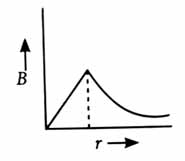
By Ampere's circuital law,
At surface so
The variation of magnetic field with distance from the axis is given by the above figure.
Q 3
:
An infinitely long straight conductor carries a current of 5 A as shown. An electron is moving with a speed of parallel to the conductor. The perpendicular distance between the electron and the conductor is 20 cm at an instant. Calculate the magnitude of the force experienced by the electron at that instant.
Electron [2021]
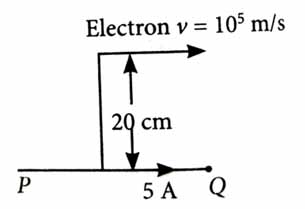

(1)
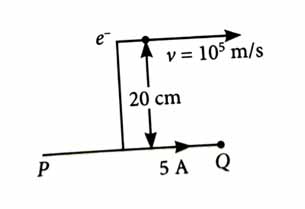
The magnetic field due to a straight wire at the location of the electron is
The direction is given by right-hand thumb rule.
The force on a charged particle moving in a magnetic field is
Q 4
:
A cylindrical conductor of radius R is carrying a constant current. The plot of the magnitude of the magnetic field, B with the distance, d from the centre of the conductor, is correctly represented by the figure [2019]
(4)
Magnetic field due to long solid cylindrical conductor of radius ,
(i) For
(ii) For (maximum)
(iii) For
Q 5
:
A long straight wire of radius carries a steady current . The current is uniformly distributed over its cross-section. The ratio of the magnetic fields and , at radial distances and respectively, from the axis of the wire is [2016]
1
4
-
-
(1)
Magnetic field at a point inside the wire at distance from the axis of wire is
Magnetic field at a point outside the wire at a distance from the axis of wire is
Q 6
:
Two identical long conducting wires and are placed at right angle to each other, with one above other such that is their common point for the two. The wires carry and currents, respectively. Point is lying at distance from along a direction perpendicular to the plane containing the wires. The magnetic field at the point will be [2014]
(4)
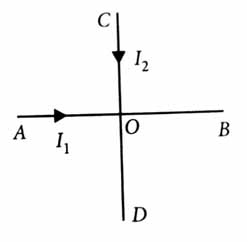
The magnetic field at the point , at a perpendicular distance from in a direction perpendicular to the plane due to currents through and are perpendicular to each other. Hence,
